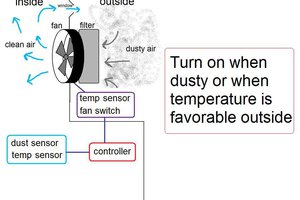I'm putting most of the real content in project logs, but I figure this is a nice place to put design constraints, milestones, and specs.
Constraints:
- Smartphone-sized or smaller (shooting for smaller.)
- Purchase as few components as possible
- Must have a screen
- Must be compatible with 5V and 3.3V sensors
- Must be compatible with sensors which require an amplifier
Specs (derived from constraints):
- Hackaday.io Pro Trinket (5V) microcontroller
- 9V battery for power (Constraint #2)
- LM317 voltage regulator (Constraint #2) (Sensors not powered off of Trinket regs)
- 741 Op-Amp for amplified sensor input (#2)
- Adafruit 1.8" TFT display
- Block terminals for: +V, GND, Unamplified In, Amplified In
- Switches for: On/Off, 3.3V/5V logic
- 10k pot for op-amp gain control
- Rotary encoder with pushbutton switch for UI
Current Milestones:
- Buy all components that I don't have
- Think of a better project name
- Draw up a schematic. By hand. In the back of a notebook.
- Start prototyping!
 AngusJimiKeith
AngusJimiKeith


 Chad
Chad
 Alex Hunt
Alex Hunt
 Austin Marandos
Austin Marandos
 shlonkin
shlonkin